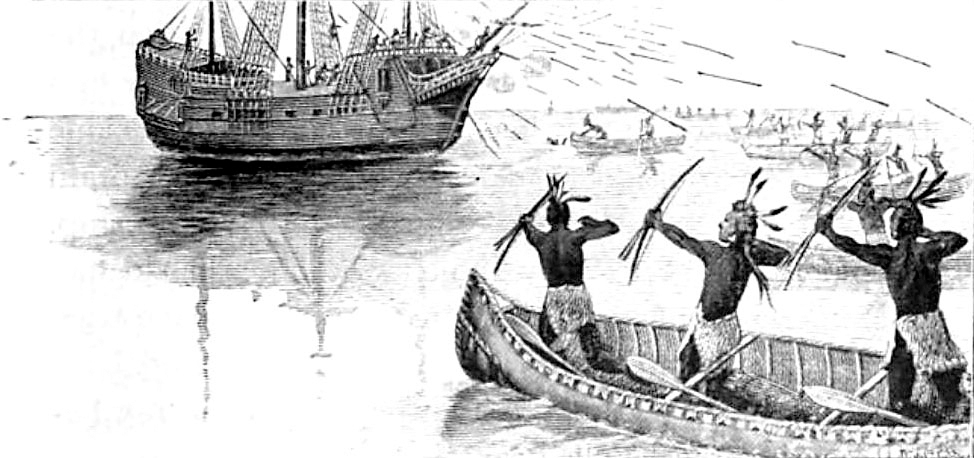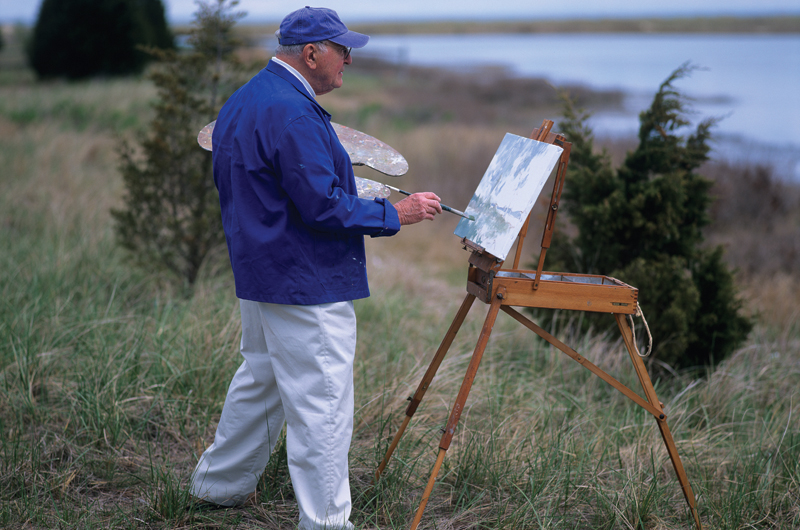Eastville: Village on the east side of Vineyard Haven harbor where early camp meeting attendees landed. Beginning in 1835, day-trippers either rode wagons or walked the mile from Eastville’s Norris Wharf to Wesleyan Grove, also known as the Martha’s Vineyard Camp Meeting Association. By 1852, on a typical summer Sunday, steamers from Providence and New Bedford might disembark upwards of 5,000 worshipers. Eventually, wharves were built closer to Wesleyan Grove. In an attempt to remain relevant, Eastville added a deep-water dock and a more direct route, called Kedron Avenue, which is now New York Avenue. To little avail. By the early 1900s Eastville was once again a quiet, isolated village.
 Edgartown Mining Company: One of seven mining companies to leave the Vineyard with high hopes and head west during the California Gold Rush of 1849. In May of that year roughly fifty men embarked on the Walter Scott, captained by Henry Pease II. Most were Islanders in various trades, lured by the rumor that a party of four could average $100 a day in the gold fields, which was more than twenty times what an unskilled laborer could expect to earn in Massachusetts at the time. Unfortunately, the Edgartown Mining Company wasn’t as lucky. “I must now advise all my friends not to come to this country,” Captain Pease wrote in a letter. “By all means, stay at home.” Within two years the Walter Scott and most of the crew of the Edgartown Mining Company returned to Martha’s Vineyard, no richer than the day they sailed to California. Pease went back into the more reliable business of whaling.
Edgartown Mining Company: One of seven mining companies to leave the Vineyard with high hopes and head west during the California Gold Rush of 1849. In May of that year roughly fifty men embarked on the Walter Scott, captained by Henry Pease II. Most were Islanders in various trades, lured by the rumor that a party of four could average $100 a day in the gold fields, which was more than twenty times what an unskilled laborer could expect to earn in Massachusetts at the time. Unfortunately, the Edgartown Mining Company wasn’t as lucky. “I must now advise all my friends not to come to this country,” Captain Pease wrote in a letter. “By all means, stay at home.” Within two years the Walter Scott and most of the crew of the Edgartown Mining Company returned to Martha’s Vineyard, no richer than the day they sailed to California. Pease went back into the more reliable business of whaling.
Ellis, Ray: 1921–2013. Nationally recognized artist known for his watercolor and oil paintings focusing on the sea and landscapes. Born in Pennsylvania, Ellis made the Island his permanent home in 1991. In the early 1980s he collaborated with CBS Evening News anchor and part-time Island resident Walter Cronkite on a series of three books depicting America’s coastlines. He was a generous supporter of many Island causes: in 2010 one of his paintings sold for $230,000 – the largest bid made at an Island charity auction, with the proceeds benefitting the Martha’s Vineyard Preservation Trust. Another of his paintings hangs in the permanent collection of the White House. On into his nineties, one thing was certain: he could always be found in his Edgartown studio painting away.
 Epenow: First Vineyarder to cross the Atlantic and return to tell the tale. Enslaved by an explorer in 1611 and brought to London, the Wampanoag Epenow worked as a sideshow attraction at carnivals, coffeehouses, and taverns. (Native Americans were popular: in Shakespeare’s The Tempest, Trinculo complains that in England “when they will not give a doit to relieve a lame beggar, they will lay out ten to see a dead Indian.”) Eventually he became the “property” of Sir Ferdinando Gorges, a speculator with “rights” to develop the coast from Delaware to Maine, who described his new slave as “a native of the island of Capawick, a place seated to the southward of Cape Cod....a goodly man, of a brave aspect, stout, and sober in his demeanor, and had learned so much English as to bid those who marveled at him ‘Welcome! Welcome!’” Gorges might have added “clever” to the list: Epenow let Gorges believe that there was gold to be found on his home island, and in 1614 Epenow found himself on a ship heading home. There, he successfully jumped ship under cover of a barrage of arrows from twenty canoes of his countrymen. Suffice it to say no gold was found and, fearing Gorges’s wrath, the men responsible for watching the valuable slave claimed Epenow had been killed in the fracas. But when another English explorer, Thomas Dermer, visited the Vineyard in 1619, he reported: “I met with Epenow a Savage that had lived in England, and speaks indifferent good English, who four years since being carried home, was reported to have been slain, with divers of his countrymen, by Saylors, which is false.”
Epenow: First Vineyarder to cross the Atlantic and return to tell the tale. Enslaved by an explorer in 1611 and brought to London, the Wampanoag Epenow worked as a sideshow attraction at carnivals, coffeehouses, and taverns. (Native Americans were popular: in Shakespeare’s The Tempest, Trinculo complains that in England “when they will not give a doit to relieve a lame beggar, they will lay out ten to see a dead Indian.”) Eventually he became the “property” of Sir Ferdinando Gorges, a speculator with “rights” to develop the coast from Delaware to Maine, who described his new slave as “a native of the island of Capawick, a place seated to the southward of Cape Cod....a goodly man, of a brave aspect, stout, and sober in his demeanor, and had learned so much English as to bid those who marveled at him ‘Welcome! Welcome!’” Gorges might have added “clever” to the list: Epenow let Gorges believe that there was gold to be found on his home island, and in 1614 Epenow found himself on a ship heading home. There, he successfully jumped ship under cover of a barrage of arrows from twenty canoes of his countrymen. Suffice it to say no gold was found and, fearing Gorges’s wrath, the men responsible for watching the valuable slave claimed Epenow had been killed in the fracas. But when another English explorer, Thomas Dermer, visited the Vineyard in 1619, he reported: “I met with Epenow a Savage that had lived in England, and speaks indifferent good English, who four years since being carried home, was reported to have been slain, with divers of his countrymen, by Saylors, which is false.”





